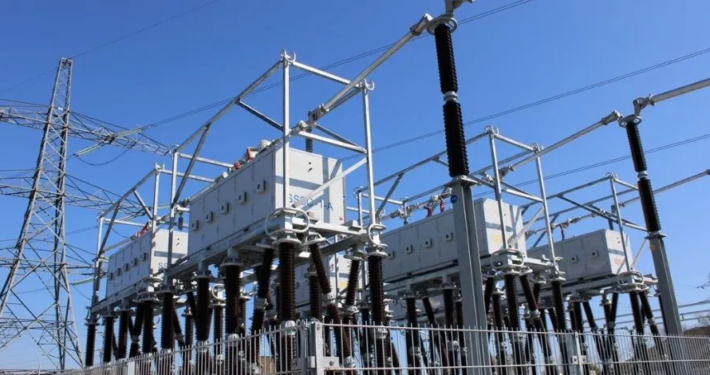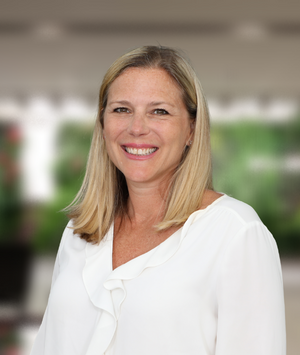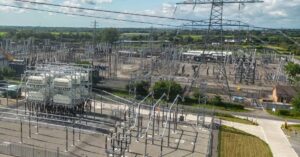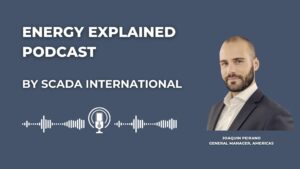

Harnessing the potential of renewable energy: FERC’s Order 2023 accelerating interconnection with advanced transmission technologies
September 6, 2023
Timely cost-efficient connection of renewable generation is essential to reaching clean energy targets in the US. In this article, Jessica Joyce shares her insights on the potential impact of FERC’s Order 2023 on reforming the interconnection process, based on her experience of moving from the wind energy sector to a grid technology company.

After more than a decade working in the wind turbine manufacturing and service industry, I joined Smart Wires last year to tackle one of the most critical challenges of the energy transition – the grid.
While at UpWind Solutions and later Vestas, I spent lots of time working closely with renewable developers and transmission network owners to bring wind farms online and keep them running efficiently. I experienced first-hand the barriers to connecting new renewables, from the long interconnection queues to the delays and curtailment caused by congestion on the grid. Every delay or overspend in a new infrastructure project, such as building a new line, had a direct impact on the connection and overall viability of new renewable projects.
Yet the grid is only just starting to get the recognition it needs. New phrases have been coined in an attempt to shift the public’s focus towards the grid such as Australia’s ‘No transition without transmission’ catchphrase, and the viral ‘Hug pylons, not trees’ feature in The Economist. But it’s not just about building new grids, we also need to digitalize controls and get more from the networks we already have.
Regulation of electricity networks is moving in the right direction, as policymakers and regulators introduce new mechanisms, remuneration structures, and funding to incentivize the most efficient grid investments. In the US, FERC’s Order 2023 that was announced this summer marks a huge step in the right direction, introducing several measures to speed up the interconnection studies process, increase transparency on grid capacity, and ultimately get renewable generation connected faster and more cost-efficiently than before. On the latter, Order 2023 requires that transmission owners must now consider a set of alternative transmission technologies in interconnection studies. One of these is advanced power flow control (APFC), which can balance power flows across the grid to reduce congestion and unlock latent capacity for more renewables on the existing grid.
Order 2023 builds on the huge progress already made in the US on incentivizing better use of the existing grid, through FERC transmission workshops focused on Grid Enhancing Technologies (GETs), large funding programs such as the DOE Grid Resilience and Innovation Partnership (GRIP) and more. The growing use of these technologies has also led to updates to utility long-term network planning tools, allowing them to easily model these new technologies. For example, our Analytics services team has worked closely with several planning software providers, including DIgSILENT who provide PowerFactory and FGH who provide INTEGRAL, to augment their off the shelf modular Static Series Synchronous Compensator (SSSC) models to represent our APFC technology (SmartValve).
Collaboration between developers, utilities and industry is essential for progress and Order 2023 is key as it will standardize study processes and bring increased transparency on interconnection queues and levels of grid capacity, making it easier and quicker to identify preferred connection points for new generation to come on line.
We’re already working with several leading renewable developers in the US and Europe to identify applications where our technology could not only enable faster interconnection of new generation, but also improve economic performance for existing projects, providing operational benefits to the system operator as well.
Order 2023 is here, so we should start seeing benefits in the queues, on the grid, and in our communities relatively quickly. Every year that connecting renewables is delayed or lower than planned, the risk of not reaching our clean energy targets by 2025, 2030 and beyond increases. As this year’s American Clean Power Week highlighted, the renewable industry is #ReadytoBuild. Our regulators agree, and this year we’ve finally seen progress to re-establish a supportive framework that will help us build faster and more efficiently.
At Smart Wires, we’re focused on reimagining the grid for net zero and I look forward to continuing to partner with utilities, developers, and other stakeholders around the world to make this a reality.
Check out our Central Hudson case study to learn how our technology is helping to connect more renewables in New York State.
Contributing expert
Jessica Joyce is Former Chief Commercial Officer for Smart Wires. She has two decades of sales leadership experience across the renewable energy and logistics sectors. She joined Smart Wires in early 2022 after serving as Director of Sales at Vestas, a wind turbine manufacturer, where she worked closely with asset owners and renewable developers and experienced the challenges and financial pain of curtailment and congestion connecting new renewables to the grid. Prior to this, Joyce was VP of sales and marketing at UpWind Solutions, where she drove business growth before the company was integrated into Vestas.
For press related purposes, please contact us at marketing@smartwires.com.
Dive deeper into related content
Explore our products and services
Talk to our experts


